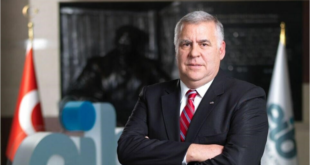Worldwide, 675 million people still lack access to electricity, with more than 70% — 600 million— living in sub-Saharan Africa. Lack of sufficient power generation capacity and inadequate distribution networks are a big part of the problem. But even many who are connected to the grid face an unreliable power supply due to poor maintenance of transmission and distribution infrastructure.

Reliable power is especially critical for healthcare services, which need it for lighting, vaccine storage, water provision, sterilization of medical equipment, and operation of critical appliances such as ventilators and oxygen concentrators. Yet 15% of medical facilities in sub-Saharan Africa lack connection to power, and only 40% of the connected ones receive a reliable supply.
While electricity access in Kenya has improved tremendously over the last decade, reaching 75% of the total population, 26% of the country’s medical facilities lack a power connection. And only 15% of the grid-connected ones receive uninterrupted electricity.
Decentralized renewable energy solutions offer many benefits. Due to their ease of installation coupled with onsite power generation capacity, they can help deliver affordable electricity to rural health facilities located in areas where extending the grid may not be economically viable. When integrated with battery storage, these systems can also provide back-up power in areas experiencing irregular electricity supply from the grid, replacing expensive and polluting diesel generators.
Reduced operational and maintenance costs in the long-term are also a big benefit of distributed renewable energy systems — both in alleviating the need for generators and offering savings compared to grid-provided power. In Makueni County, Kenya, where WRI Africa and Strathmore University are supporting the county government in developing its integrated energy plan, the local government incurs a monthly electricity bill of about $13,000 for just one of its main facilities, Makueni Level 6 hospital, which serves between 1,000 – 1,200 patients daily. The county government is exploring solar energy as a potential option to help reduce costs.

Innovative Financing Models Put Distributed Renewable Energy Within Reach
One of the biggest challenges of bringing distributed renewable energy to Africa’s healthcare sector is financing. For example, a recent report by Sustainable Energy for All (SE4All) estimates that electrifying Kenya’s healthcare facilities alone will require $235 million, including $133 million for private facilities and $102 million for public ones. While on-site solar power offers cost savings over the long-term, upfront equipment expenses can be steep.
Over the last two years, Differ Community Power (DCP) in collaboration with Population Services (PS) Kenya and WRI Africa have been supporting electrification of five healthcare facilities in Kenya using solar PV and storage. Top Care Nursing Home’s solar installation project offers an example of how innovative financing models can bring distributed solar within reach even for resource-strapped medical centers.
DCP (the developer) offers a “lease-to-own” model for solar PV systems. Against a small downpayment (10% of the total investment cost), DCP procures, installs and operates the system over an agreed period — usually 5 to 7 years, by which time the end user (in this case, the nursing home) will have fully paid for the system. In addition to helping reduce the up-front cost of the investment, this model provides a closer business relationship between the developer and end-user, thus removing technology risks associated with potential system failures.

The team from DCP remotely monitored the system installed at Top Care Nursing Home throughout Kenya’s recent power blackout, providing staff at the facility with real-time support to troubleshoot challenges. This helped the nursing home remain operational for the entire outage without needing to use its standby generator.
Better Healthcare through Decentralized Renewables
When healthcare facilities lose power or need to spend scarce resources on expensive generators, it’s ultimately the patients who suffer. Policymakers, investors, development partners, companies and others must realize that renewable energy is not just about generating environmental benefits; it’s about creating resilient and affordable power systems that protect people’s health.
Source: www.wri.org
 THE GLOBAL WINDOW OF TURKISH FOOD AND AGRICULTURE The Global Window of Turkish Food and Agriculture Sector
THE GLOBAL WINDOW OF TURKISH FOOD AND AGRICULTURE The Global Window of Turkish Food and Agriculture Sector









